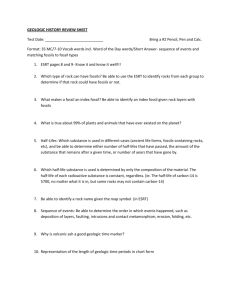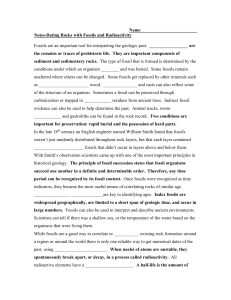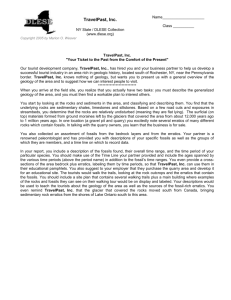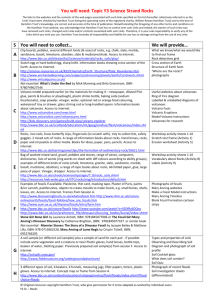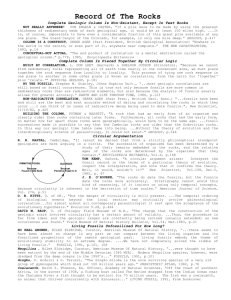Fossils - Parks Trust
advertisement
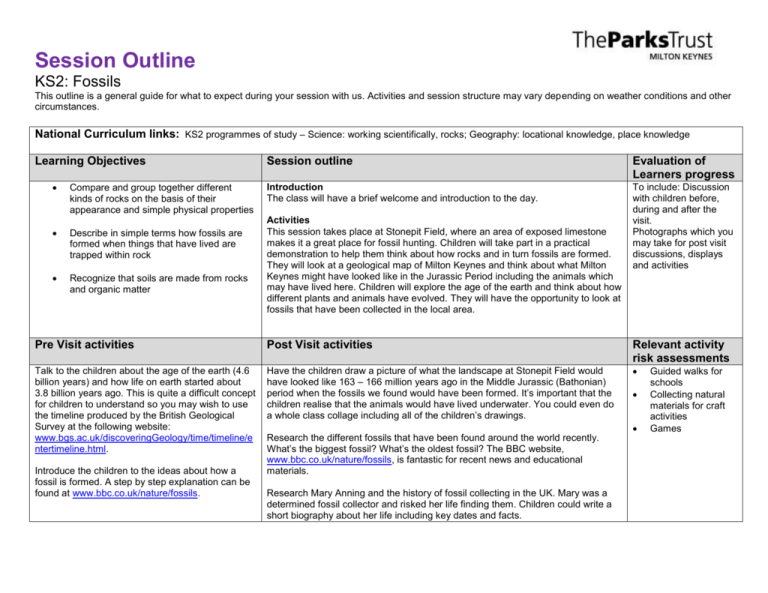
Session Outline KS2: Fossils This outline is a general guide for what to expect during your session with us. Activities and session structure may vary depending on weather conditions and other circumstances. National Curriculum links: KS2 programmes of study – Science: working scientifically, rocks; Geography: locational knowledge, place knowledge Learning Objectives Compare and group together different kinds of rocks on the basis of their appearance and simple physical properties Describe in simple terms how fossils are formed when things that have lived are trapped within rock Recognize that soils are made from rocks and organic matter Session outline Evaluation of Learners progress Introduction The class will have a brief welcome and introduction to the day. To include: Discussion with children before, during and after the visit. Photographs which you may take for post visit discussions, displays and activities Activities This session takes place at Stonepit Field, where an area of exposed limestone makes it a great place for fossil hunting. Children will take part in a practical demonstration to help them think about how rocks and in turn fossils are formed. They will look at a geological map of Milton Keynes and think about what Milton Keynes might have looked like in the Jurassic Period including the animals which may have lived here. Children will explore the age of the earth and think about how different plants and animals have evolved. They will have the opportunity to look at fossils that have been collected in the local area. Pre Visit activities Post Visit activities Relevant activity risk assessments Talk to the children about the age of the earth (4.6 billion years) and how life on earth started about 3.8 billion years ago. This is quite a difficult concept for children to understand so you may wish to use the timeline produced by the British Geological Survey at the following website: www.bgs.ac.uk/discoveringGeology/time/timeline/e ntertimeline.html. Have the children draw a picture of what the landscape at Stonepit Field would have looked like 163 – 166 million years ago in the Middle Jurassic (Bathonian) period when the fossils we found would have been formed. It’s important that the children realise that the animals would have lived underwater. You could even do a whole class collage including all of the children’s drawings. Introduce the children to the ideas about how a fossil is formed. A step by step explanation can be found at www.bbc.co.uk/nature/fossils. Research the different fossils that have been found around the world recently. What’s the biggest fossil? What’s the oldest fossil? The BBC website, www.bbc.co.uk/nature/fossils, is fantastic for recent news and educational materials. Research Mary Anning and the history of fossil collecting in the UK. Mary was a determined fossil collector and risked her life finding them. Children could write a short biography about her life including key dates and facts. Guided walks for schools Collecting natural materials for craft activities Games




